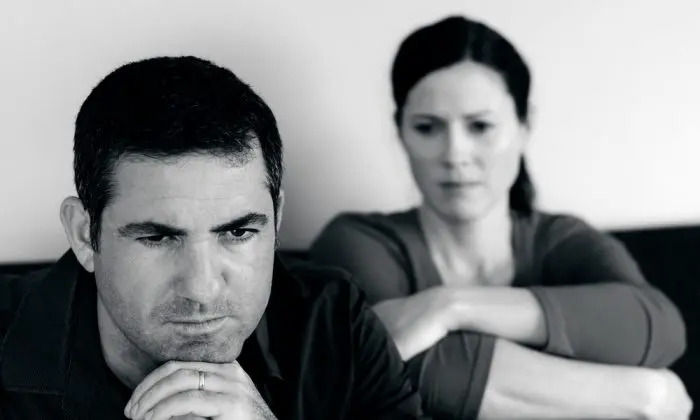She was someone who ruminated and worried all the time. Her mind was constantly busy chewing on and planning for one problem or another. She desperately wanted relief from her thoughts and the cacophony of her mind.
How to Develop a Healthy Relationship With Your Emotions


And so we went to work. Through the practice of mindfulness, Lina learned to witness her thoughts; she discovered a separate place inside herself from which to watch her mind, and hear what her thoughts were telling her. She became the listener to her thoughts rather than the thinker, and in the process she unlocked a deep and much-needed sense of peace.
However, when we attempted to bring this same sort of mindful detachment to her emotions, it was a much harder and more painful process. While most of us can get the hang of witnessing our thoughts, and can understand the purpose of it, it’s far more challenging and even threatening for us to detach from and take a witness seat to our emotions. It turns out that we’re even more attached to and identified with our emotions than we are to our thoughts, and we’re pretty darned attached to our thoughts.
To take a step back for a moment, while I’m using the terms emotions and feelings interchangeably, technically, they’re different phenomena. An emotion is a chemical response that happens in the body, a physical process that includes brain activity and hormonal changes that we’re not conscious of. A feeling, on the other hand, is something we’re aware of, a state of mind that generally comes in response to an emotion or thought.
But for the purposes of this article and limited space, I will use both terms to refer to what we generally call a feeling. That is, an internal experience that’s mental, physical, and also conscious. Emotions and feelings, as I’m using the two terms here, are those sensations we experience as deeper than thought, taking place in the whole body, and associated with the heart rather than just the head.
Interestingly, we’re open to the idea that who we are is not our thoughts, but we are incredibly resistant to the idea that who we are is not our emotions. So too, we can accept that our thoughts might not always be true, believable, important, or even ours to decide. But, when it comes to our emotions, we are firmly convinced that our emotions are true and of great importance. We can let a thought float through our mind, without engaging it or paying it much mind, but that same willingness doesn’t apply when it comes to our feelings. Feelings are what define us (or so we’ve been taught) and therefore must be given our full attention and reverence.
When we feel sadness, we say we are sad. When we feel happiness, we say we are happy. We are our emotions. So too, we imagine that our emotions hold some fundamental truth about our experience, that they contain important clues to our deepest nature. We view our emotions as the keys to the castle that is us.
Our emotions, as we’ve learned to relate to them, are manifestations of our life experience. They hold our suffering and also our joy; emotions are our heart’s way of carrying and expressing our life. To detach from our emotions would be to lose some primal part of ourselves, to relinquish everything we’ve endured, suffered, and enjoyed. To relate to our emotions with a sense of separation would, ultimately, be to abandon who we are.
Simultaneously, we imagine that our feelings are what cause us to suffer. In fact, it’s not the feelings themselves that make us suffer, but rather the way we relate to them. We don’t experience suffering so much as we suffer our experience. We attach and identify with our feelings, which costs us our emotional freedom and our happiness. We immediately construct a narrative to explain why the feeling is there, to make sense of it and fit it into a larger self-story, thereby adding layers of made-up meaning, complexity, and usually suffering to it. When a feeling arises, we give it permission to consume us and control our state of being. We think it’s that important.
In truth, our emotions are not as important, solid, or revelatory as we imagine them to be. In fact, they are more like weather patterns that move through our consciousness, constantly changing, coming and going without our permission. Some are strong and dark, others are light and breezy; we can feel excited, sorrowful, frustrated, anxious, and joyful, all in the matter of an hour or, for some of us, a minute. Often they happen without any identifiable cause and are simply remnants of old memories and conditioning. At times, the intensity of a feeling will match the situation; at other times, it won’t. Sometimes feelings are in alignment with what’s true and sometimes not. But what’s certain is that feelings are not facts.
The point is, we don’t choose our emotions and we don’t have to relate to them with such respect and fear. We don’t have to surrender to them simply because they appear. Our emotions don’t hold the keys to our happiness or well-being. And furthermore, we don’t have to investigate, understand, dive into, and essentially get inside every feeling that shows up. Having a feeling doesn’t mean we have to get busy feeling it.
Like thoughts, feelings will pass—if we let them. If, that is, we don’t assign them the highest importance and meaning, latch onto them and go for the ride they’re offering, and don’t build them into narratives about us and our life. Essentially, they will pass if we don’t relate to them as who we fundamentally are.
To free yourself from the tyranny of your emotions, start by first just becoming aware of your emotions—actually paying attention to the feelings moving through your inner world. We can’t change anything until we’re aware of it. Sitting at your desk, taking a shower, driving, or doing anything, really, get in the habit of turning your inner lens on your own internal landscape. Throughout the day, pause and ask yourself, “At this moment, what feelings are present inside me?” Note to yourself, “Oh, I see the weather of sadness is here, or hmmm, there are winds of irritation passing through.” Pay attention to where and how they are showing up in your body. What’s important is that you do this without getting involved in the storylines attached to the feelings, the who and what they’re about, and why they’re here. Just notice the feelings on their own, name them if it helps, again, without diving into or identifying with them. Notice too, how quickly they can move through you, change, and disappear—when you maintain your witness seat.
Keep in mind that you didn’t build this reverence for your emotions overnight and you’re not going to undo it overnight. Keep practicing awareness, watching your feelings come and go; keep practicing noticing without engaging, building the you that’s not defined by your emotions. As you practice, your life will change, and so will you.




